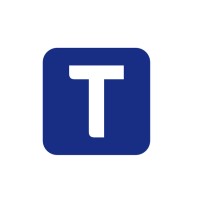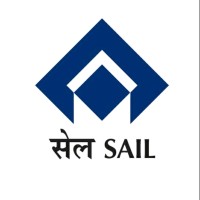Company Cyber Security Posture
NANA
NA Company Details
NA
NA
NA
NA
NA
NA
Scan still pending
NA
NA
Between 200 and 800
This score is AI-generated and less favored by cyber insurers, who prefer the TPRM score.
 NA Global Score
NA Global Score.png)

Company Scoring based on AI Models
| Model Name | Date | Description | Current Score Difference | Score |
|---|---|---|---|---|
| AVERAGE-Industry | 03-12-2025 | This score represents the average cybersecurity rating of companies already scanned within the same industry. It provides a benchmark to compare an individual company's security posture against its industry peers. | N/A | Between 200 and 800 |
Company Cyber Security News & History
| Entity | Type | Severity | Impact | Seen | Url ID | Details | View |
|---|
Company Subsidiaries

NA
Access Data Using Our API

Get company history
.png)
NA Cyber Security News
Closing Bell: Saudi main index inches up to close at 11,129
RIYADH: Saudi Arabia's Tadawul All Share Index gained 8.04 points, or 0.07, to close at 11,129.64 on Wednesday. Total trading turnover reached ...
Saudi food industry market leader ‘performed exceptionally’ despite pandemic
RIYADH: Almunajem Foods, one of Saudi Arabia's largest private food companies, has reported a successful 2020 and is maintaining a positive ...
Saudi food co. Almunajim goes sustainable with solar panels at Riyadh's cold stores
The solar panels installed are equivalent to 30 percent of onsite energy requirements and equivalent to reducing carbon emissions by 38,756 tons ...

NA Similar Companies

Tramontina
More than just numbers, what truly defines Tramontina is the constant effort to make people's lives better. The small iron mill founded by Valentin and Elisa Tramontina in 1911 in southern Brazil was the beginning of a group that now encompasses 9 manufacturing units and has kept the century-old tra

Indomarco Adi Prima
Indomarco Adi Prima (IAP) is a fully subsidiary of Indofood that operating as strategic business unit in distribution. We have the most extensive distribution network in Indonesia, reach out to almost every remote spot in the country. Since 2005, our stock point quantity has been growing significant

Steel Authority of India Limited
Steel Authority of India Limited (SAIL) traces its origin to the formative years of an emerging nation - India. After independence, the steel sector was to propel the economic growth and rapid industrialization of the country, and since 1973, SAIL steel has played a pivotal role in transforming the

Ferrero
Founded in 1946 by Pietro and Giovanni Ferrero, the Ferrero Group is a family-owned business in its third generation. It has been built by talented people who share a commitment towards continuous improvement to achieve the highest quality and care. This same commitment is put into everything we do

Newell Brands
Newell Brands (NASDAQ: NWL) is a leading global consumer goods company with a strong portfolio of well-known brands, including Rubbermaid, Sharpie, Graco, Coleman, Rubbermaid Commercial Products, Yankee Candle, Paper Mate, FoodSaver, Dymo, EXPO, Elmer’s, Oster, NUK, Spontex and Campingaz. We are f

Alpargatas S.A.
We are a global company, founded and based in Brazil for over 115 years. We are committed to delight the world with amazing brands, that convey lightness and joy to the everyday lives of our consumers. We own Havaianas brand, world leader in open shoes, known for the iconic flip-flops that represent

Frequently Asked Questions
Explore insights on cybersecurity incidents, risk posture, and Rankiteo's assessments.
NA CyberSecurity History Information
How many cyber incidents has NA faced?
Total Incidents: According to Rankiteo, NA has faced 0 incidents in the past.
What types of cybersecurity incidents have occurred at NA?
Incident Types: The types of cybersecurity incidents that have occurred include .
Additional Questions
What Do We Measure?
















Every week, Rankiteo analyzes billions of signals to give organizations a sharper, faster view of emerging risks. With deeper, more actionable intelligence at their fingertips, security teams can outpace threat actors, respond instantly to Zero-Day attacks, and dramatically shrink their risk exposure window.
These are some of the factors we use to calculate the overall score:
Identify exposed access points, detect misconfigured SSL certificates, and uncover vulnerabilities across the network infrastructure.
Gain visibility into the software components used within an organization to detect vulnerabilities, manage risk, and ensure supply chain security.
Monitor and manage all IT assets and their configurations to ensure accurate, real-time visibility across the company's technology environment.
Leverage real-time insights on active threats, malware campaigns, and emerging vulnerabilities to proactively defend against evolving cyberattacks.




